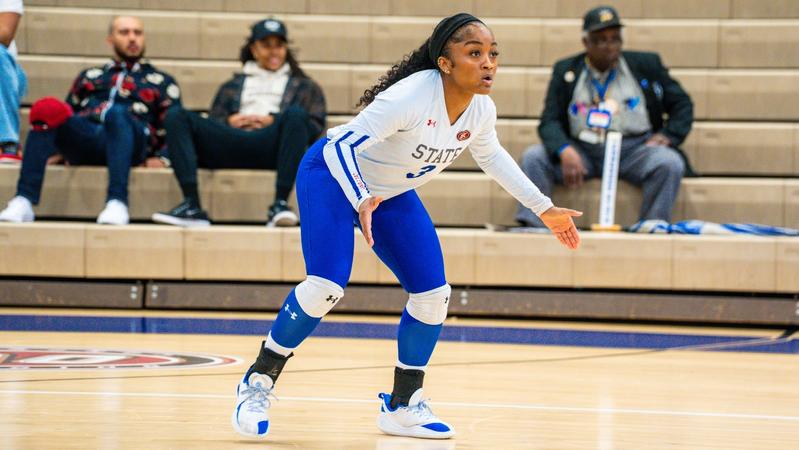Sports
An anime series about competitive figure skating made me believe in queer joy

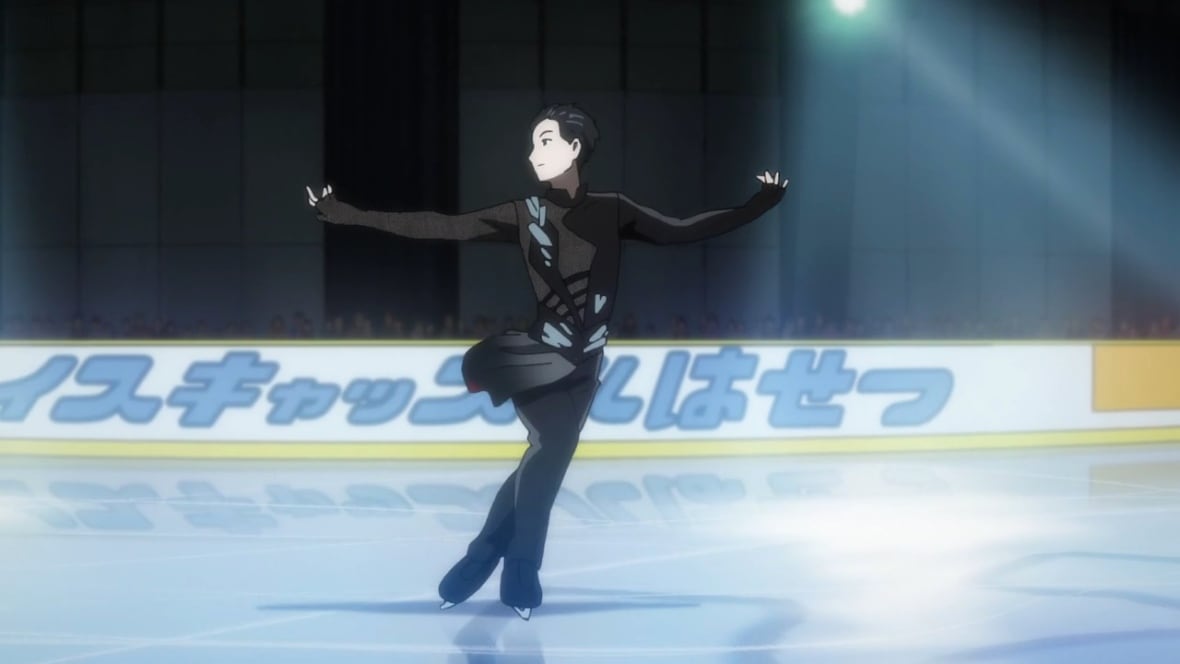
Emerging Queer Voices is a monthly LGBTQ arts and culture column that features different up-and-coming LGBTQ writers. You can read more about the series and find all published editions here.
The first time I watched Yuri on Ice, I was sitting in my small apartment, thousands of kilometres from my hometown. I recall hitting play with casual curiosity. Just another show to fill time, I thought. I had no way of knowing that those 23 minutes would change something fundamental about me.
The beginning
As a non-binary bisexual person growing up in India, I grappled with the reality of being myself in worlds that hardly even recognized that I existed. The few queer stories I found — in infrequent books, while scouring the internet for fan fiction late at night — almost always ended in heartbreak, rejection or death. These stories taught me that suffering was the necessary cost of authenticity.
Yuri on Ice is an anime series about competitive figure skating, which centres around Yuri Katsuki, a talented but anxious Japanese skater who has hit rock bottom after a crushing defeat at the Grand Prix Finals. But his idol, Victor Nikiforov — a charismatic five-time world champion from Russia — sees a viral video of Yuri perfectly replicating one of Victor’s routines, and it’s not long before Victor unexpectedly arrives at Yuri’s family’s hot-spring resort to become his coach.
The 12-episode series takes place across an international skating season, as Yuri attempts to rebuild his confidence and career with Victor’s guidance. The show gained popularity for its detailed animation of skating sequences and authentic portrayal of the competitive figure-skating world.
When Victor first appeared on screen, I prepared for a familiar pattern: meaningful glances never acknowledged, tension never released or a connection tragically severed.
What I got instead was revolutionary. Episode after episode, Victor and Yuri’s relationship grew — not through coded gestures and plausible deniability, but through genuine emotional intimacy. When they exchanged rings toward the end of the series, I paused the video to wipe away tears. I needed a moment to process what I was witnessing: a promise of forever between two men, framed not as a punchline, but as a natural milestone in their journey together.
Mirrors in the most unlikely places
What struck me most was how Yuri and Victor’s story played out in the world of competitive figure skating, with its rigid gender roles. Having had to negotiate spaces defined by similarly strict gender norms in India, I understood the uneasy balance it took to thrive in these spheres.
I remembered how every style, linguistic and social choice, every topic of discourse, every friendship, was part of a complicated calculus of authenticity versus safety.
I noted the same survival strategies in Yuri. His anxiety, his careful way of moving through life, his simultaneous yearning for connection and terror of being vulnerable — these weren’t just character traits, but also coping mechanisms that felt all too familiar. Seeing him with Victor, making space for his entire self, reminded me of my own journey.
Between worlds
The cross-cultural relationship between Yuri and Victor struck another chord. In one scene, Victor tries to comfort Yuri before a competition, but only makes Yuri cry because he misreads cultural cues. That moment encapsulated countless experiences in my own life — the confusion, miscommunication and unintended pain of mixed-race connections.
As both characters learn, bridging cultures requires patience, clear communication and willingness to be vulnerable amid the confusion. The series captured this process with a nuance that echoed my lived experience of feeling out of place.
Finding myself in the in-between
I’ve come to view my identity as a mirror ball, reflecting many facets at once and formed by shards that don’t always align perfectly. I live in liminal spaces between traditional categories, belonging partially to many places, but fully to none.
Yuri on Ice articulated this existence with incredible clarity. The series itself defies categorization. It’s not quite sports anime and not quite romance. Victor and Yuri’s relationship crystallizes on the road — in hotel rooms, at airports, at foreign competitions — mirroring how many queer people, especially those with multiple marginalized identities, construct their homes in the in-between.

In the final episode, Yuri performs a routine that integrates everything he’s learned about himself, mixing what he has drawn from his cultural background with lessons from his relationship with Victor. Like Yuri, I too am the product of my culture, my gender expression and my professional and personal selves — not through compartmentalization but through integration.
Small shifts on sleep-deprived nights
One night, a week or so after I finished the series for the first time, I couldn’t sleep, and I rewatched the Cup of China episode in which Yuri overcomes the pressure of being in first place after the short program and performs well in his free skate. Victor, caught up in his emotions, kisses him live on international television. I remember replaying that scene at least five times, the blue glow from the screen bright in an otherwise dim room.
By the fourth playback, I understood that I was having an experience I couldn’t name on the spot because it was so unfamiliar. I was watching someone like me being loved openly, without shame or death. It was after midnight, and the realm outside my window was silent. But inside, I experienced a deep shift in what I felt was possible for me.
If Victor could kiss Yuri while the world looked on, perhaps I could stop shrinking my identity for someone else’s comfort. If their love could be celebrated instead of punished, maybe mine deserved to be honoured too. These were simple ideas, but for a person who was brought up on stories where queerness always comes at a price, they felt revolutionary.
From surviving to thriving
Before Yuri on Ice, engaging with queer media felt like harm reduction — noting the least tragic options, celebrating the slimmest slivers of representation. The bar was so low that vague subtext seemed like a win.
The success of the series demonstrated what many knew, but the industry hadn’t conceded: that viewers wanted stories about queer love that didn’t inevitably end in suffering. We’re not a niche market that will be content with occasional tokens; we’re viewers with a passionate investment in seeing ourselves not just surviving, but flourishing.
Yuri on Ice opened doors for anime like Given and Bloom Into You, which approach queer relationships with similar nuance. Even Western animation has evolved from coded to explicit queer representation, as in She-Ra and The Owl House.
Personal revolution
Years later, what remains most powerful for me is how the series reshaped what I believe to be possible, on screen and in my life. It helped me envision a future where complex identities aren’t barriers to connection, but pathways to deeper understanding. It taught me that stories about people like me don’t have to end in tragedy, that breaking boundaries related to gender, sexuality and culture can lead not just to survival, but to joy too.
Whenever I rewatch Victor and Yuri performing together in perfect harmony despite their differences, I reflect on the future I’m creating — one where differences can be embraced as the foundation of our relationships.
Yuri on Ice matters because it dared to imagine that future first. And in doing so, it helped me imagine it for myself.


Sports
Quinasia Abercrombie Named PBC Women’s Basketball Player of the Week

AUGUSTA, Ga – Augusta women’s basketball sophomore Quinasia Abercrombia was named PBC Player of the Week
WOMEN’S BASKETBALL
Player of the Week
Quinasia Abercrombie, Augusta
Sophomore, Guard/ Forward
- Averaged 21.50 points as Augusta went 2-0 on the week
- Abercrombie scored 26 points while adding 10 rebounds, two assists and four steals in a 91-69 victory over Converse
- Scored 17 points while adding four rebounds and two steals in a 53-47 victory over Middle Georgia
- Abercrombie is averaging 15.6 points, good for fourth in the conference and 6.8 rebounds, good for ninth in the conference with a .530 field goal percentage which is good for second in the conference.
Fans of Jaguar Athletics can subscribe to the email listserve by clicking here. Fans can follow Augusta University at www.augustajags.com and receive short updates on Facebook at Augusta University Athletics and on Twitter at @AugustaJags
Sports
Walton Named A-10 Player of the Week for Third Time
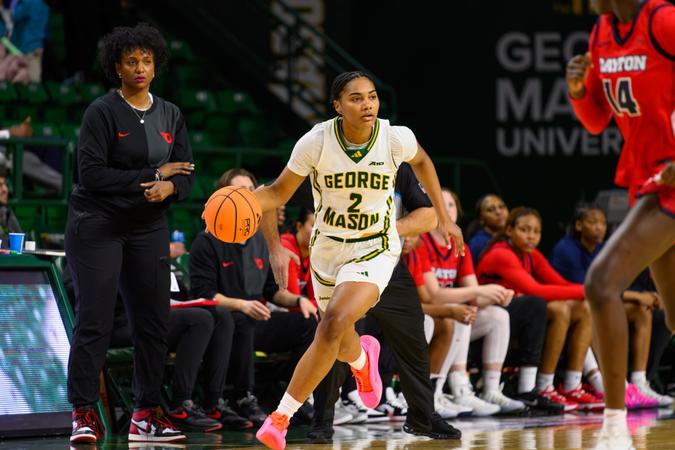
Walton posted 25 points on 70% shooting, including 10-13 from the free throw line vs. the Flyers on New Years Eve. She scored 14 of those points in the fourth quarter to secure the Patriots’ 74-59 victory. Walton also scored four rebounds and dished out four assists.
The Patriots went 2-0 last week, continuing their undefeated streak in conference play, and stretching their overall record to 8-6 on the season.
Sports
Brittnay Estes – Assistant Coach/Recruiting Coordinator – Women’s Volleyball Coaches

“Brittnay is the perfect addition to our staff. She comes to us highly-recommended and is a very well-respected coach in the volleyball community. I am excited to add her energy, extreme enthusiasm and competitiveness to our gym,” said Wargo-Kearney. “Brittnay is a great relationship builder and will have the trust of our players, as well as future Wolfpack athletes. I have no doubt her impact on our program will make us stronger and she will continue to put together strong recruiting classes as our recruiting coordinator. I am fired up to welcome her to Raleigh!”
Estes joins the Pack after spending the last four seasons at her alma mater, Lipscomb.
She helped coach the 2023 ASUN Player of the Year, Meg Mersman, to All-American, All-Region honors, in addition to three All-ASUN honors.
In her first season with the Bison in 2020, she helped guide the squad to their seventh ASUN Regular Season Championship and seventh Tournament Championship after the group finished with a 14-2 overall record and 11-1 conference record.
Prior to joining the staff in Nashville, Estes spent five years in Los Angeles, California where she played one season of beach volleyball for Loyola Marymount as a graduate student before playing pro for the Associate of Volleyball Professionals (AVP), the country’s most extensive premiere beach volleyball tour.
A standout outside hitter for the Bison, the Palm Harbor, Florida native was a four year starter and was tabbed the 2015 Conference Player of the Year. During her senior campaign, she was tabbed the ASUN Tournament MVP. She remains in the top-five in the Lipscomb record book for several stats, including kills per set and kills per set in a five set match.
Over the course of her time in Nashville, she collected two All-Conference selections, two All-Tournament team nods, and four Player of the Week honors. She was also a two-time AVCA All-Region honoree. In 2020, she was named to the ASUN All-Decade team.
Estes graduated from Lipscomb in 2016 with a bachelor’s degree in Journalism and New Media. She also earned her master’s degree from Loyola Marymount in Educational Studies.
Sports
This Week in Wake Forest Women’s Athletics – Presented by Truist (Jan. 5-11)

- Women’s Basketball:
- Wake Forest began the month with a 74-55 victory over Pitt on Jan. 1, as the Demon Deacons shared the ball at an elite rate, assisting on 26 of the 29 made baskets in the win over the Panthers.
- It marked the first time since the 2019-20 season that the Deacs started ACC play at 2-1.
- The Demon Deacons now turn the attention to the California swing, first facing Stanford on Thursday before concluding the trip against Cal on Sunday.
- Track & Field:
- The Wake Forest women’s track and field team are set to return to action with three meets during the month of January.
- The Demon Deacons begin 2026 by competing in the Mondo College Invitational (Jan. 17) at the JDL Fast Track in Winston-Salem.
- The Deacs will then have a dual slate during the final week of the month, with one group heading to Lynchburg, Va. to compete at the Brant Tolsma Invitational (Jan. 30-31), while another group traveling to Boston for the John Thomas Terrier Classic (Jan. 31).
- The Wake Forest women’s track and field team are set to return to action with three meets during the month of January.
- Volleyball:
- Head coach Jeff Hulsmeyer and Demon Deacons volleyball recently announced three additions in middle blocker Catherine Burke, libero Andrea Roman and outside hitter Amina N’Diaye.
- Burke comes to Wake Forest from Penn State, where she was a member of the Nittany Lions’ 2024 National Championship team. Off the court, she earned a spot on the 2024 Academic All-Big Ten Team.
- Roman was one of the country’s top defenders this past fall as a junior at Little Rock, finishing second in the NCAA in total digs (632) while being named the OVC Defensive Player of the Year. The Humacao, Puerto Rico, native earned multiple all-OVC honors during her three years with the Trojans.
- N’Diaye spent her freshman season at Miami, helping the Hurricanes rank as a top-15 team nationally for the majority of the fall en route to making an appearance in the second round of the 2025 NCAA Tournament. A key piece of Miami’s core of hitters, she was third on the roster in kills (139) in 27 matches.
- Head coach Jeff Hulsmeyer and Demon Deacons volleyball recently announced three additions in middle blocker Catherine Burke, libero Andrea Roman and outside hitter Amina N’Diaye.
About Truist
Truist Financial Corporation is a purpose-driven financial services company committed to inspiring and building better lives and communities. Truist has leading market share in many high-growth markets in the country, and offers a wide range of products and services through our retail and small business banking, commercial banking, corporate and investment banking, insurance, wealth management, and specialized lending businesses. Headquartered in Charlotte, N.C., Truist is a top 10 U.S. commercial bank with total assets of $574 billion as of March 31, 2023. Truist Bank, Member FDIC. Learn more at Truist.com.
About Wake Forest University
Wake Forest University is known for its distinctive combination of world-class academics, unrivaled campus experience, intimate learning environment and Power 4 athletics in a top-growing metro market. A Charter member of the Atlantic Coast Conference, the Demon Deacons have won 59 conference titles and are one of nine ACC schools to win 11 or more national championships. Additionally, with 1.7 million people within 30 miles of campus, Wake Forest anchors the Winston-Salem and Triad market, which ranks as ESPN’s seventh-best nationally from a viewership perspective.
Wake Forest’s comprehensive excellence includes its highly regarded school of medicine, business school, law school, innovative department of engineering and its nationally renowned Program for Leadership and Character, which prepares students to live with purpose, integrity and courage. Additionally, Wake Forest has campuses across Winston-Salem, Charlotte and Washington, D.C. – providing many academic offerings to students from across the nation and around the world.
Learn more about Wake Forest University at www.wfu.edu and at GoDeacs.com.
Sports
Tyler Legacy lands 5 on 6A All-State volleyball team

LONGVIEW — Five Tyler Legacy volleyball players earned honors on the Blue Bell/Texas Sports Writers Association Class 6A All-State Volleyball Team, the organization announced on Monday.
Taylor Woods and Maddie Goin were honorable mention selections as outside hitters. Mikel Reed and Aubrey Felton earned honorable mention honors at middle blocker. Kate Priest was an honorable mention pick at libero/defensive specialist.
Woods, a Louisiana Tech signee, had 379 kills, 285 digs, 25 blocks, 44 aces, 497 serve/receive receptions and a 2.08 average. Goin had 235 kills, 194 digs, 21 blocks, 300 serve/receive receptions and a 2.04 average. Reed had 124 kills, 52 blocks and 48 digs. Felton had 112 kills, 62 blocks, 13 aces and 41 digs. Priest had 328 digs, 419 serve/receive receptions and a 2.11 average.
The Lady Raiders went 22-10, qualified for the playoffs for the first time since 2021 and won a playoff match for the first time since 2007.
Longview’s Triniti Jackson was a third-team pick at setter. Teammates Alyssa Grissom, Jaharia Hunter and Landry Tubb were honorable mention selections at middle blocker, outside hitter and libero/defensive specialist, respectively.
Jackson had 702 assists, 401 kills, 313 digs, 45 blocks and 60 aces. Grissom had 201 kills, 91 blocks, 31 aces and 56 digs. Hunter had 331 kills, 222 digs and 32 blocks. Tubb had 628 digs, 28 aces and 42 assists.
State champions Byron Nelson (Division I) and Southlake Carroll (Division II) earned the top superlatives in voting. Byron Nelson’s Sophee Peterson was named Player of the Year in Class 6A, and Leslie Jackson of Southlake Carroll earned Coach of the Year honors.
Voting was conducted by TSWA members based on nominations from coaches and TSWA members from around the state.
COACH OF THE YEAR: Leslie Jackson, Southlake Carroll
PLAYER OF THE YEAR: Sophee Peterson, Byron Nelson
FIRST TEAM
Middle Blockers: Kinsley Young, Southlake Carroll; Camille Presley, Austin; Kerington Thornton, Round Rock
Outside Hitters: Layla Austin, Southlake Carroll; Avery Koonsen, Pearland Dawson; Marlee Lightsey, Comal Canyon
Setter: Sophee Peterson, Byron Nelson
Libero/Defensive Specialist: Jenna Thedford, Pearland Dawson
SECOND TEAM
Middle Blockers: Taliah Angwekwe, Stony Point; Callie Funk, Katy Tompkins; Keaton Points, Pearland Dawson
Outside Hitters: Kylie Kleckner, Byron Nelson; Riley Malloy, Austin; Saniya Reynolds, Cy Ranch
Setter: Logan Sanders, Comal Canyon
Libero/Defensive Specialist: Taylor Wright, Copperas Cove
THIRD TEAM
Middle Blockers: Ryea Jackson, Duncanville; (tie) Madyson Carr, Cy Ranch; (tie) Micah Rusher, Oak Ridge
Outside Hitters: Kylie Rodriguez, Forney; Ashley Seay, Byron Nelson; Jaylyn Tuiasosopo, O’Connor
Setter: (tie) Triniti Jackson, Longview; Audrey Cook, Stratford
Libero/Defensive Specialist: Emerson Chang, Manvel
HONORABLE MENTION
Middle Blockers: Carinne Bouie, Goose Creek Memorial; Mikel Reed, Tyler Legacy; Aubrey Felton, Tyler Legacy; Khadijah Blue, Cibolo Steele; Mia Carrasco, Eastlake; Alyssa Grissom, Longview; Carolina Elizondo, Laredo Alexander; Jocelyn Joyner, O’Connor
Outside Hitters: Jaharia Hunter, Longview; Taylor Woods, Tyler Legacy; Nevah English, Manvel; Karina Deylen Mendivil, James Madison; Sloane Ranney, Pearland Dawson; Simone Heard, Plano East; Giselle Gandara, Eastlake; Leila Ceaser, Oak Ridge; Jasmyn Walker, Manvel; Peyton Smith, Duncanville; Maddie Goin, Tyler Legacy; Elisa St. Rose, Katy Thompson; Halle Thompson, Grand Oaks; Gwen Koss, Stafford; Mary-Christine Crutcher, Mansfield
Setter: Olivia Pena, O’Connor; Maggie McCarroll, Austin; Tinsley Welker, Fort Bend Austin; London King, Manvel
Libero/Defensive Specialist: Kaylee Parker, Cy Ranch; Landry Tubb, Longview; Isabella Cordaway-Dreier, Round Rock; Lainey Monroe, Katy Tompkins; Kate Priest, Tyler Legacy
Sports
HPISD Board of Trustees Honors Volleyball Team
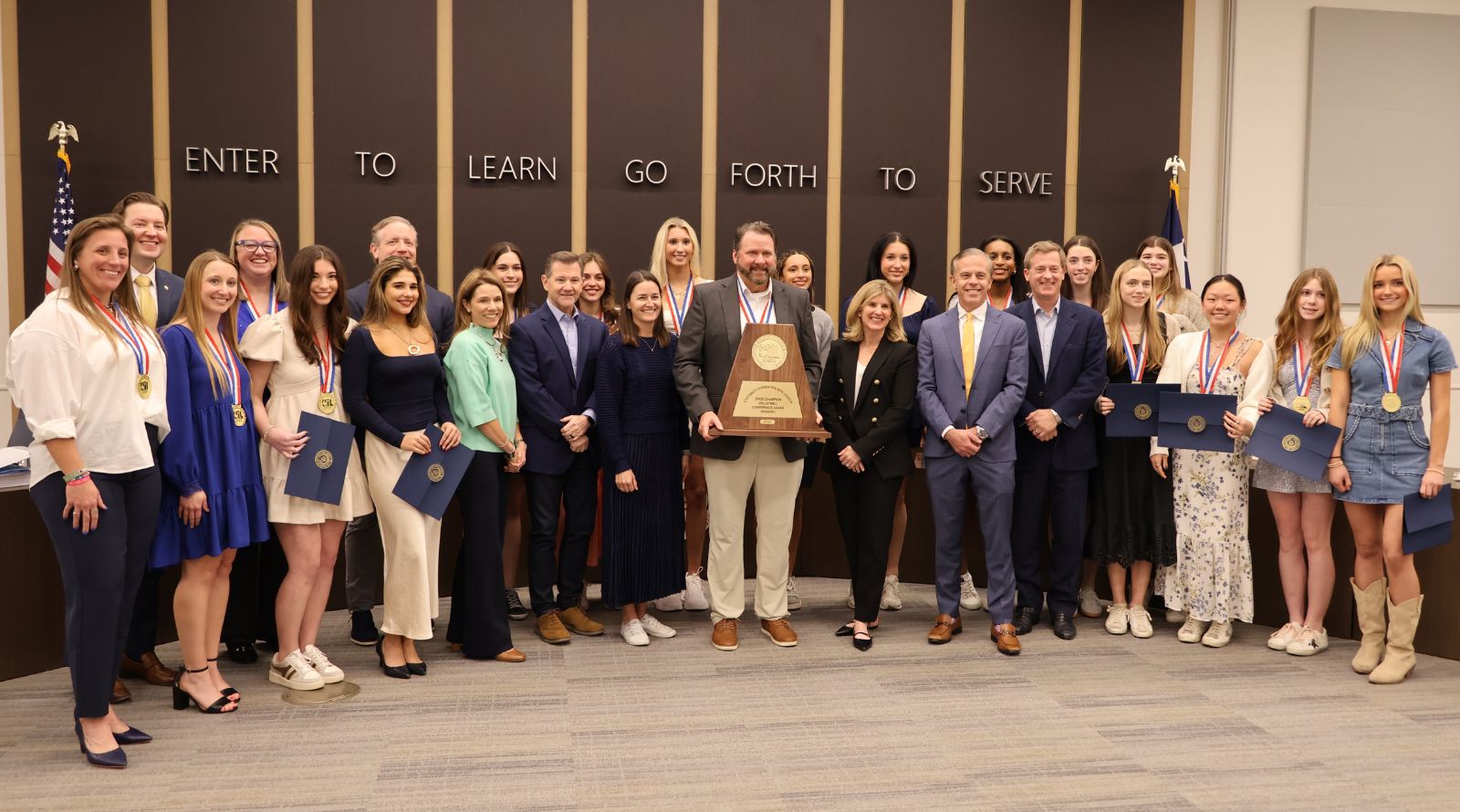
The Highland Park ISD board of trustees recognized the district’s history-making volleyball team at its Dec. 16 meeting.
Head coach Michael Dearman called the Class 5A Division I state champions “a very special team.”
“We, of course, were chock full of talent. You’re looking at several All Americans here. But that’s not the real story about this team. The real story about this team is about closeness, and the family, and the trust that we had with one another,” he said. “They played for each other. It was an amazing, amazing experience.”
Dearman recognized each Lady Scot and the team’s coaches individually.
-

 Motorsports3 weeks ago
Motorsports3 weeks agoRoss Brawn to receive Autosport Gold Medal Award at 2026 Autosport Awards, Honouring a Lifetime Shaping Modern F1
-

 Rec Sports2 weeks ago
Rec Sports2 weeks agoPrinceton Area Community Foundation awards more than $1.3 million to 40 local nonprofits ⋆ Princeton, NJ local news %
-

 NIL3 weeks ago
NIL3 weeks agoKentucky AD explains NIL, JMI partnership and cap rules
-

 Sports3 weeks ago
Sports3 weeks agoBeach Volleyball Unveils 2026 Spring Schedule – University of South Carolina Athletics
-

 Sports2 weeks ago
Sports2 weeks agoBadgers news: Wisconsin lands 2nd commitment from transfer portal
-

 Sports2 weeks ago
Sports2 weeks agoIs women’s volleyball the SEC’s next big sport? How Kentucky, Texas A&M broke through
-

 NIL3 weeks ago
NIL3 weeks agoCollege football program loses 25 players to transfer portal
-

 Sports3 weeks ago
Sports3 weeks agoFour From Women’s Volleyball Named to College Sports Communicators Academic All-District Team
-

 Rec Sports3 days ago
Rec Sports3 days agoFive Youth Sports Trends We’re Watching in 2026
-
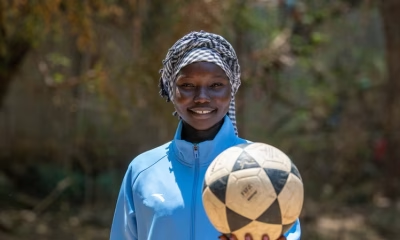
 Rec Sports3 weeks ago
Rec Sports3 weeks agoRefugee-Focused Youth Sport Initiatives : Moving for Change


































